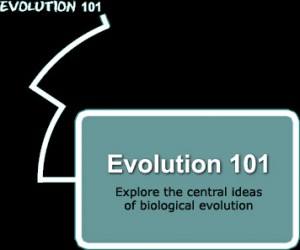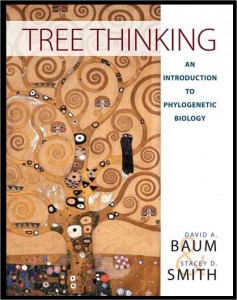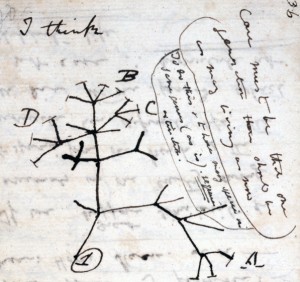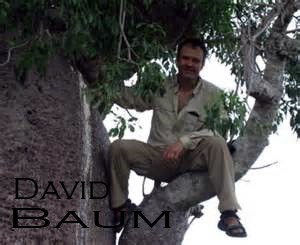 The Evolution 101 Common Ancestor website, produced by the University of California, argues that “the central idea of biological evolution is that all life on Earth shares a common ancestor.”
The Evolution 101 Common Ancestor website, produced by the University of California, argues that “the central idea of biological evolution is that all life on Earth shares a common ancestor.”
This idea dates back to Charles Darwin’s grandfather, Erasmus Darwin (1731-1802). He proposed that “all warm-blooded animals have arisen from one living filament,” which is a common ancestor.
In their book Tree Thinking (2013), David Baum of the University of Wisconsin, along with Stacy Smith of the University of Colorado, attempts to build on this Darwinian argument. “This means,” they argue, “that evidence of common ancestry is also evidence for evolution.”
Scientific evidence for this argument for natural selection, however, is sketchy at best. As Baum and Smith explain, “tree thinking is conceptually challenging” since tracing a species back to a specific common ancestral species remains, as this article will demonstrate, more theoretical than factual.
Tree Thinking
Tree Thinking, An Introduction to Phylogenetic Biology, is a university-level textbook that assesses the relevance of the tree of life on evolution. With endorsements from Yale, Harvard, and Duke Universities, the book  Roberts and Company Publishers market it.
Roberts and Company Publishers market it.
The book addresses common methodological pitfalls in the teaching of evolution, specifically from the perspective of the tree of life. “We can’t expect students and the general public to understand the big idea of evolution ― [which is] common ancestry,” argues Louise Mead from Michigan State University, “if we neglect to teach them the basic skills necessary to understand and interpret evolutionary trees.”
A scientific evaluation of common ancestry, however, has clearly been overlooked, even in this book. Of the 350 tree drawings in the book, less than 2% of the trees included a common ancestor. Even these, though, have a problem. While two are nineteenth-century drawings, among the modern drawings, only three include a common ancestor. These were the Opossum, Lobeliaceae cardinalis, and the Embryophta.
These, however, are not common ancestors. Opossum and Embryophta are terms used to classify groups of species; they do not represent a distinct species. While Lobeliaceae cardinalis is a species of plant, the plant is commonly found today along stream banks and swamps. By definition, this is a living fossil, not a common ancestor.
Surprisingly, the scientific evaluation of common ancestry in Evolution 101 is even more astonishing. Among the total of 49 tree drawings on the website, not a single tree (0%) includes the name of a common ancestor.
 The only exception is Darwin’s mythological “I Think” (pictured left) tree of life rendering drawn in 1837. This common ancestor is only indicated by the number “1.” Without scientific evidence for any common ancestor on any published tree of life, students and the general public are certainly not likely to “understand the big idea of evolution.”
The only exception is Darwin’s mythological “I Think” (pictured left) tree of life rendering drawn in 1837. This common ancestor is only indicated by the number “1.” Without scientific evidence for any common ancestor on any published tree of life, students and the general public are certainly not likely to “understand the big idea of evolution.”
Evolution 101
If any scientific authority should be responsible for addressing the common ancestor problem, it is Evolution 101. This website is the most significant consensus collaborative of the evolution industry.
The declared purpose of the website is to “improve teachers’ and students’ understandings of evolution and increase instructors’ confidence.” Evolution 101 is a collaborative product of the University of California Museum of Paleontology, the National Center for Science Education (NCSE), the National Science Foundation, and the Howard Hughes Medical Institute.
As the best state-of-the-art information center, Evolution 101 is one of the foremost authorities representing the evolution industry. While Baum and Smith more transparently address the problems with Darwin’s tree of life concept, Evolution 101 remains irreversibly entrenched by the historical dogma of the evolution industry.
At the core of the tree of life problem is the lack of scientific evidence. Baum and Smith did not miss the fact that the use of trees is beyond the realm of science. They point out that “Trees discussed by biologists are the result of scientific inference.” Reliance on inference, rather than scientific evidence, means that direct scientific evidence for a common ancestor is nonexistent.
“[I]t is wise to be open to the possibility of a lack of treelike ancestry,” argue Baum and Smith. Given the scientific evidence, they include the possibility of the Genesis account based on the fossil and molecular perspectives:
“Our knowledge of the molecular process is not good enough to definitively rule out independent origins.”
Without scientific validation, common ancestors can only be recognized as theoretical. Likely for this reason, Baum and Smith discount the value of evolution, noting –
“For our purposes, it does not matter whether the cause of the separate origins was by natural or supernatural means. It is, a priori, possible that these different forms were independently created.”
Since “you can explain fossils as independently created,” Baum and Smith argue, evidence from the fossil record points to the non-existence of a common ancestor, intensifying the Darwin Dilemma.
While paleontology has yet to uncover any common ancestors, this phenomenon is ubiquitous throughout the scientific disciplines. According to Baum and Smith – 
“Regardless of which method is used, the optimal tree cannot be assumed to be the true tree.”
The “big idea of evolution” presented on the Evolution 101 Common Ancestor website, as it turns out, is simply an “Emperor without clothes.” Darwin’s tree of life increasingly resembles a nineteenth-century myth.
Darwin’s dilemma intensifies.
Genesis
 Modern technologies are increasingly challenging the theory of evolution and uncovering evidence compatible with the Genesis record written by Moses.
Modern technologies are increasingly challenging the theory of evolution and uncovering evidence compatible with the Genesis record written by Moses.
Nicholas Copernicus (1473-1543), a Renaissance mathematician and astronomer, proposed that Earth rotates around the Sun. The theory, known as a heliocentric theory, eventually upended the once accepted geocentric model of our solar system and commented on our Creator –
“To know the mighty works of God, to comprehend His wisdom and majesty and power; to appreciate, in degree, the wonderful workings of His laws, surely all this must be a pleasing and acceptable mode of worship to the Most High, to whom ignorance cannot be more grateful than knowledge.”
Developing a scientific consensus on the mechanisms of evolution remains speculative.
Evolution 101: Common Ancestor is a Theory and Consensus article.
Darwin Then and Now is an educational resource on the intersection of evolution and science, highlighting the ongoing challenges to the theory of evolution.
Move On
Explore how to understand twenty-first-century concepts of evolution further using the following links –
-
- The Understanding Evolution category showcases how varying historical study approaches to evolution have led to varying conclusions. Subcategories include –
- Studying Evolution explains how key evolution terms and concepts have changed since the 1958 publication of The Origin of Species.
- What is Science explains Charles Darwin’s approach to science and how modern science approaches can be applied for different investigative purposes.
- Evolution and Science feature study articles on how scientific evidence influences the current understanding of evolution.
- Theory and Consensus feature articles on the historical timelines of the theory and Natural Selection.
- The Biography of Charles Darwin category showcases relevant aspects of his life.
- The Glossary defines terms used in studying the theory of biological evolution.
- The Understanding Evolution category showcases how varying historical study approaches to evolution have led to varying conclusions. Subcategories include –


